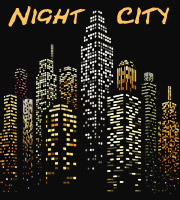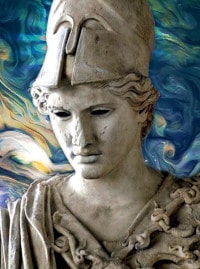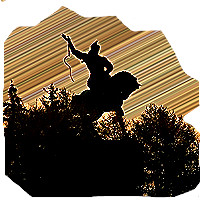‘This Alien Essence’
Chapter III. Personality and Style
Reading from pages 253-77 of Myth of the 20th Century, the 1982 Black Kite Edition
Rosenberg begins with brilliant concision:
Space is simultaneity: the essence of time is sequence.
He then makes the mistake of claiming that the art of Hellas was static, for instance the lack of portraiture and the massive devotion to sculpture and monolith. Well, there was much sport, and some perishable table wear that survived. More importantly, I have read ancient descriptions of three Hellenic paintings: the pardon of a woman by Alexander, the painting of a demon by Pausanius and the death and soul flight of a Nemean boxer in B.C. 401. This stuff simply did not survive the sequence of Time, so we are stranded here chronologically blind.
The strength of Rosenberg’s text, however, overwhelms his few mistakes.
Instinct and intellect are defined as two contentious forms of will, expressed in ancient Hellas as Dionysian and Apollonian. The Apollonian is closer to the Germanic and more faithfully Аrуаn. His contention that Greek beauty was just of the shaping of the body and Germanic, just of the shaping of the soul are oversimplifications of tendencies, partially perceived for lack of surviving Greek forms, such as much of their music. What the author is struggling with is more the modern misconception of ancient Hellas and less the actuality. He did not spend enough time on Xenophon, Pausanius or Herodotus.
His discussion of objectivity versus personality, does head in a fruitful direction. His observation that the Greek temple was an amazing “rhythmisation of space” hints at its purpose as an actual portal. Rosenberg has trouble defining the divine beyond the human soul and fails to fully penetrate this concept but does praise it in form. His veneration of the Gothic cathedral is beautifully realized. He then falls into the pit that got him hanged and mentions that “the chosen people” through their pursuit of “paradise on earth” and a return to a Genesis state, have poisoned Western art to the point where Modernity has become a “plastic” and “saccharin” graveyard of stillborn form. He was of course right in relating this ancient mythos to the risen ethos of “Marxism” as a cultural erasure.
The author also points out the obvious lack of Arabic art and the fact that Persian forms were hijacked by the desert barbarians as they donned the cloak of civilization. He cites Michelangelo as the supreme, unique, artistic genius.
His prognoses of modern art can be observed by the trash that inhabits every portion of the museum created later than 1900. Even I, who care little for art, was struck by the hideous reduction of beauty in the Industrial Age and its hideous transmogrification in the Atomic Age on my two visits to a museum.
He finally concludes after his tortured investigation: The basic ideas of Greek architecture were of essence with Germanic feeling.
His assessment of round Mediterranean houses as being reflective of “the racial Myth” of those “peoples,” compared to the long houses of the Аrуаns finds reflection in the Americas with the Algonquin folk living in round houses and Iroquois in longhouses. This aboriginal memory of the matriarchal pre-Аrуаn Europeans, preserved so well in the epic of Beowulf in the form of the monster Grendel and his mother, is oriented practically and sexually metaphorically in the swamp matrix.
The cult of the sacred Oak, at Dodona in Epirus, dedicated both to Zeus in ancient Hellas and later to Odin, is contrasted with the rabid desire to cut down such trees by Christian churches as centers of heathen resistance. He claims that the reaching metaphor of the holy tree seeking heaven, as observed according to the predominant Аrуаn sky god mythology, was resurrected in the Gothic cathedral, with its sweeping buttresses and soaring height.
Rosenberg is haunted by the idea that Christianity brought the alien, Middle Eastern obsession with materialism into Europe and that also the Аrуаn migration into India corrupted the Аrуаn soul and claims that the “culture that worships material things to a true feeling of spirit has already been completed.” However, it is still not complete, and is ever further away 90 years later. Wishful thinking creeps into the book to the point of delusion from here on out. However, the hope that man will break his money chains and that every race will have its homeland continue to be argued with insightful views of the collective souls of historical peoples and delusional calls to actions that cannot be permitted by any -ism masquerading as truth or even its seeking.
Ultimately, this scholar would serve the lie by fighting it.











